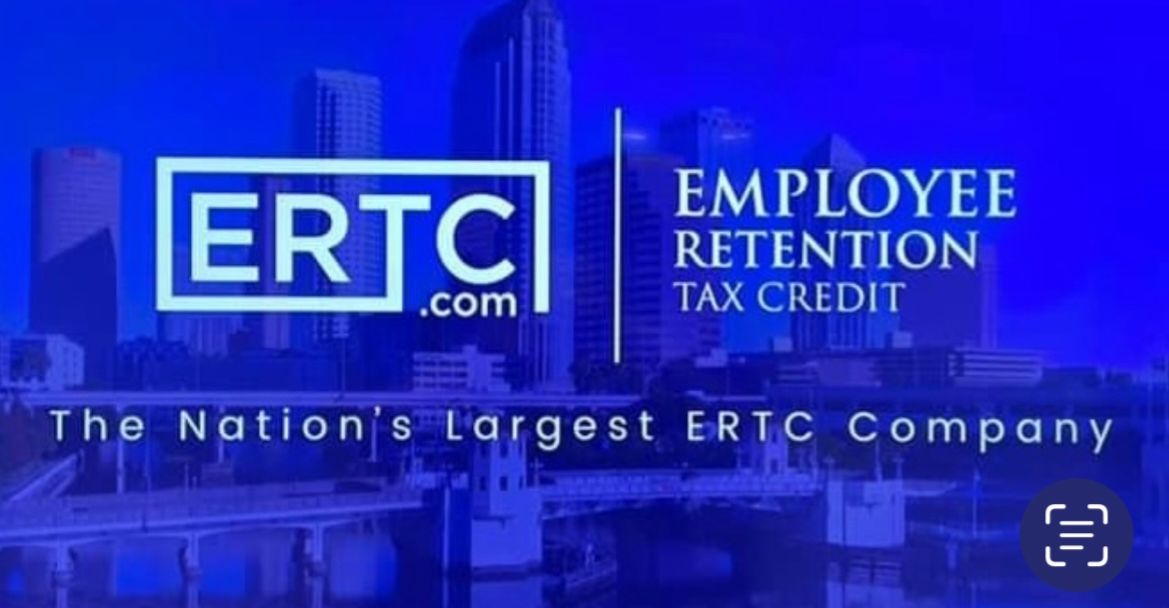Key Takeaways: Maximizing Your ERTC Benefits
-
The Employee Retention Tax Credit (ERTC) is a financial aid benefit for businesses impacted by COVID-19.
-
Eligibility for ERTC includes a significant decline in gross receipts or full-time employee counts, among other factors.
-
Claiming the ERTC involves preparing proper documentation and understanding the interplay with other relief programs like PPP.
-
Deadlines for claiming the ERTC are tied to quarterly tax filings, with specific dates to keep in mind.
Hey there! If you’re running a nonprofit or a small business, you’ve had your fair share of challenges lately. But there’s some good news that could help you stabilize your finances. It’s called the Employee Retention Tax Credit (ERTC), and it’s not as complicated as it might seem. Let’s break it down so you can take advantage of it before time runs out.
A Brief Run-Through: What is ERTC?
The ERTC is a lifeline thrown by the government to keep businesses afloat during the pandemic. It’s a refundable tax credit, which means it’s a direct reduction of your tax bill, and if it’s more than what you owe, you get the difference back in cash. Pretty neat, right?
Most importantly, this isn’t a loan. You don’t have to pay it back. The ERTC was designed to encourage businesses to keep employees on the payroll, even when times are tough.
ERTC’s Role in Supporting Business Stability
Think of the ERTC as a financial “Thank You” for not giving up on your team. By retaining your staff, you’ve not only provided them with job security but also helped the economy stay on its feet. That’s a big deal, and the ERTC is your reward for being a steadfast employer.
Timeline of ERTC: From Its Inception to 2021 Updates
The ERTC started in 2020 as part of the CARES Act, but it got a makeover in 2021 with expanded benefits. Here’s the kicker: even if you missed out before, you can still claim these credits retroactively. So, it’s not too late to get your piece of the pie.
Because the government knows that running a business or nonprofit isn’t easy, especially now, they’ve extended a helping hand through the ERTC. So, let’s make sure you’re not leaving money on the table.
Eligibility Check: Is Your Nonprofit or Small Business Qualified?
Before we dive into the nuts and bolts of claiming the ERTC, you’ve got to know if you’re eligible. And that’s what we’re going to figure out next.
The Gross Receipts Criterion
One way to qualify is to show that your gross receipts took a nosedive. Specifically, if in any quarter of 2021, your gross receipts were less than 80% of what they were in the same quarter in 2019, you’re in the clear to claim the ERTC. It’s a simple comparison, but it’s crucial for your eligibility.
Full-Time Employee Thresholds
Another factor is the size of your workforce. If you had 500 or fewer employees in 2019, the credit covers wages paid to all employees, whether they worked during the pandemic or not. But if you’re larger than that, it only covers wages paid to employees for the time they weren’t working.
Interplay Between ERTC and PPP Loans
“Remember, if you took a Paycheck Protection Program (PPP) loan, you can still claim the ERTC. The rules changed in 2021, so now you can enjoy both benefits, just not on the same wages.”
Now, let’s say you’ve ticked all the boxes for eligibility. Great! The next step is to understand how to claim this benefit, and that’s what we’re going to walk through together.

Claiming Health Insurance Costs as Qualified Wages
One of the less obvious benefits you can claim under the ERTC is the cost of health insurance provided to your employees. Yes, that’s right! Health insurance costs count as qualified wages, which means they can increase the amount of credit you receive. This includes the employer-paid portion of health, dental, and vision insurance premiums.
Therefore, when you’re calculating your credit, don’t just stop at salaries or hourly wages. Tally up what you’ve contributed towards your team’s health insurance too. This can significantly boost your credit, especially if you’ve maintained a full staff and their benefits.
Real-World Wins: ERTC Success Stories
Now, let’s look at some success stories to give you an idea of how the ERTC has helped others just like you.
A Nonprofit’s Financial Comeback
Imagine a nonprofit theater that had to close its doors during the pandemic. Ticket sales plummeted, and the future looked bleak. But, by claiming the ERTC, they were able to cover a portion of their staff’s wages and health insurance costs. This financial support helped them stay afloat until they could welcome the community back to their shows.
Small Business Retention Triumph
Then there’s the small family-owned restaurant that saw a drastic drop in customers. They used the ERTC to pay their chefs and waitstaff, even when takeout orders were the only business they had. This credit helped them retain their employees, who were essential to their eventual rebound.
Claiming Pitfalls: Common Errors and How to Avoid Them
While the ERTC can be a boon for your business, it’s crucial to be aware of common mistakes that could cost you. Let’s go over some of these pitfalls and how to sidestep them.
Deadline Missteps and Solutions
“Businesses must be vigilant about ERTC deadlines. Failing to claim the credit in time can mean leaving money on the table. Always mark your calendar for quarterly tax filings to ensure you don’t miss out.”
Deadlines are tied to your quarterly tax filings, and these dates are non-negotiable. If you miss them, you miss the opportunity to claim the credit for that quarter. So, make sure to file your Form 941 promptly.
Overlooking Eligible Expenses
Besides wages, many businesses forget to include other eligible expenses when calculating their ERTC. For example, tips can be considered qualified wages, and so can certain commissions. Make sure you’re counting every dollar you’re entitled to.
-
Wages and compensation paid to employees
-
Health insurance costs
-
Tips and commissions
-
Qualified retirement plan contributions
Comprehending the Complex Interactions with Other Programs
The ERTC doesn’t exist in a vacuum. It interacts with other programs like the PPP, and this can get tricky. You can’t claim the ERTC on wages that were already covered by a forgiven PPP loan. It’s like double-dipping in the government’s eyes, and they’re not fans of that.
But don’t let this discourage you. With careful planning and proper record-keeping, you can maximize the benefits from both programs. You just have to be meticulous about which funds are used for what.
Maximizing Your Benefit: ERTC Tips and Tricks
Now that you’re armed with the knowledge of what to do and what not to do, let’s talk about how to make the most out of the ERTC.
Optimizing Claim Amounts for Maximum Financial Impact
It’s all about strategy. To get the most out of the ERTC, you’ll want to calculate your credit meticulously. Every qualified wage, every insurance premium, every penny counts. And remember, if you didn’t claim the ERTC in previous quarters, you could file amended returns to get those credits retroactively.
As the economic landscape continues to evolve, many nonprofits and small businesses are still unaware that they can claim the Employee Retention Tax Credit (ERTC) for 2021. This significant tax relief can provide much-needed financial support during these challenging times.
Understanding the Small Print: ERTC Nuances Explained
When you’re digging into the ERTC, it’s like peeling an onion – there are layers to understand. For starters, the ERTC isn’t just a flat rate; it’s a percentage of qualified wages, up to a certain cap. In 2021, it’s 70% of the first $10,000 in wages per employee for each quarter. That means up to $7,000 per employee, per quarter. Now, that’s significant!
What Constitutes “Qualified Wages”
So, what counts as qualified wages? It’s not just the salary or hourly rate. It includes certain health plan expenses, and for small businesses, even the wages paid to business owners and their family members might qualify. But remember, the devil’s in the details. You’ve got to follow the rules to a T to make sure you’re not claiming what you shouldn’t.
Sector-Specific Rules for Nonprofits
For nonprofits, the ERTC can be particularly helpful. Your funding might come from donations, grants, or fundraising events, and with those being hit hard, the ERTC is a way to keep your mission moving forward. But each sector has its own nuances. For example, government grants might affect your gross receipts calculation, so you’ll want to look at that closely.
And don’t forget about the Public Health Emergency Grants or the Provider Relief Fund. If you received these, it could impact your ERTC eligibility. It’s all about understanding how different types of funding and support intersect with the ERTC.
Seek Professional Advice: When to Consult an Expert
There comes a point when it’s wise to call in the cavalry. If you’re unsure about your eligibility, the calculation, or how to file for the ERTC, talking to a tax professional can save you a headache. They stay up-to-date on all the tax laws and can guide you through the process, ensuring you claim every penny you’re entitled to.
Assessing Complex Claims
ERTC claims can get complex, especially if you’re trying to navigate the interplay with PPP loans or other aid you’ve received. If your situation isn’t straightforward, a tax expert can help you figure out the optimal way to claim the credit without stepping over any lines.
Escaping the Maze of Tax Law
Tax law is notoriously complicated, and with the ERTC, there’s no exception. If you’re feeling lost in the maze, a tax professional can be your guide. They can help you understand the intricacies of the credit, from what wages are eligible to how to handle amended returns. This isn’t just about getting the credit; it’s about staying compliant with the IRS.
Frequently Asked Questions (FAQ)
Let’s tackle some common questions you might have about the ERTC. These are the kinds of questions I hear all the time, and the answers could be the key to unlocking financial aid for your organization.
Remember, while this FAQ covers the basics, there’s no substitute for personalized advice. Every business’s situation is unique, and the ERTC is no one-size-fits-all matter.
What exactly qualifies a business for ERTC?
To qualify for the ERTC, a business needs to meet certain criteria. These include experiencing a significant decline in gross receipts or being subject to a full or partial suspension of operations due to government orders related to COVID-19. Nonprofits are also eligible under similar conditions.
Can you claim ERTC if you have already received a PPP loan?
Yes, you can still claim the ERTC even if you’ve received a PPP loan. However, you cannot use the ERTC for the same payroll costs that the PPP loan covered. It’s essential to keep these funds separate to maximize your benefits from both programs.
How do I revise previous tax filings to claim ERTC benefits?
If you didn’t claim the ERTC on your original tax filings, you can file an amended payroll tax return using Form 941-X. This allows you to retroactively claim the credit for past quarters. Just make sure you have all your payroll records in order to support your claim.
What are the deadlines for filing an ERTC claim?
The deadlines for claiming the ERTC are tied to your quarterly tax filings. Specifically, you’ll need to file Form 941, the Employer’s Quarterly Federal Tax Return. The usual due dates are April 30, July 31, October 31, and January 31 for the fourth quarter of the previous year.
Where can I learn more about the ERTC for my small business or nonprofit?
For detailed guidance on the ERTC, the IRS website is a great resource. They have a dedicated section for the ERTC, including FAQs and instructions for claiming the credit. Additionally, many tax professionals specialize in helping businesses and nonprofits navigate these waters, so consider reaching out for expert advice.
As we wrap up, remember that the ERTC is a powerful tool in your financial aid arsenal. It’s worth your time to understand it and claim it if you’re eligible. And if you’re feeling overwhelmed, learn more about how professionals can help you through the process. It could be the difference between just surviving and truly thriving in these challenging times.



